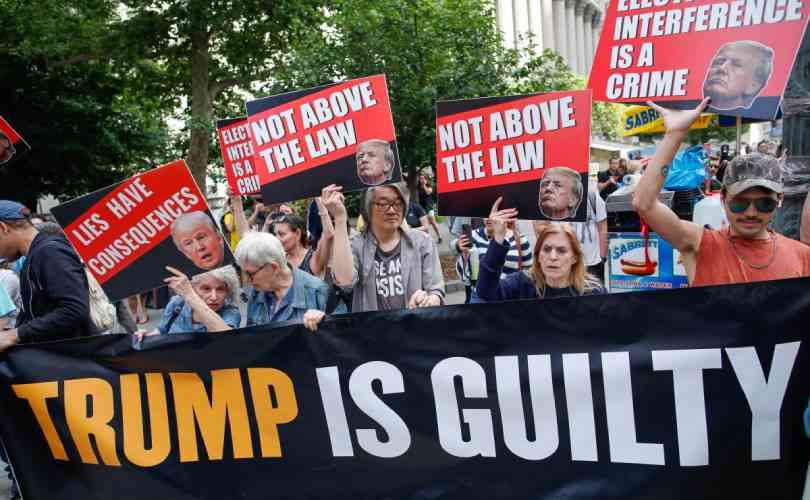Unless Donald Trump makes significant gains, the latest Reuters Ipsos poll still puts Hillary Clinton ahead of her Republican rival by 11 points in the race for the White House. German Chancellor Angela Merkel already has a strong case for being described as Europe’s most powerful woman.
And as the Brexit fallout settled, it swiftly became clear that Britain’s next prime minister would also be female. (It’s worth noting that this PM would have run the fifth-largest global economy had not the collapse in sterling after the UK vote to leave the European Union pushed France into that place.)
Theresa May has replaced Cameron when he stepped down last week.
Britain is not currently scheduled to have another election until 2020, although an incumbent prime minister can in theory call one at any time.
On the Labour Party side, the favourite to succeed embattled opposition leader Jeremy Corbyn is Angela Eagle.
Despite widespread dissatisfaction within the party, she has been the only one willing to put her head above the parapet as a challenger - although with Corbyn clinging on it still promises to be a tough fight.These women have emerged from the most brutally savage spell in British politics in living memory. None of them owe their positions to tokenism.
An entire generation of British male politicians has watched their reputations crash and burn since the June 23 referendum, and the women were the ones left standing. Ms. May could yet prove as divisive a prime minister as Margaret Thatcher.
At the Home Office, May took a controversially tough line on migration and has now sparked outrage even from diehard “leave” campaigners for a refusal to guarantee that EU citizens currently in Britain will be able to stay.
America is hardly alone in never having had a female head of state; however, neither has France, China or Russia.
Putin, France’s François Hollande and China’s Xi Jinping may now find themselves balanced, however, by May, Merkel and (probably) Clinton. In many respects, their achievements are striking given how underrepresented women are in national politics in all three countries. In Germany, only 37 percent of parliamentarians are female.
In the UK, it is 29 per cent; in the U.S. Congress it is as low as 19 per cent. Only two countries, Rwanda and Bolivia, are above gender parity in national level political representation, with the United States ranking 96th worldwide.
When it comes to having female heads of government or state, a string of smaller and developing countries have arguably led the way. Sri Lanka became the first country to have a woman prime minister with the election of Sirimavo Bandaranaike in 1960.
Golda Meir became Israel’s prime minister in 1969. Argentina’s Isabel Peron became the world’s first woman president in 1974.
There have been female heads of state or government in India, Pakistan, Bangladesh, Liberia, Turkey, Burundi, Central African Republic, Mongolia, and Haiti amongst others. Some were the daughters or wives of previous national leaders.
In multiple cases, female leaders — such as Pakistan’s Benazir Bhutto or Britain’s Thatcher — have become iconic figures. Women leaders should not be, and are not, defined solely by gender - and it is never the most interesting thing about them.
Back in 1995, Clinton famously told a United Nations conference in Beijing that human rights were women’s rights and women’s rights were human rights. But as with whether a country features any women or minorities on its currency, these examples do make a difference. Inevitably, it colors both the realistic aspirations of other women at all levels in the country as well as the way men think about politics, power and agency
Stay informed. Subscribe to our newsletter
There are stark limits to this. Just as the election of Barack Obama did nothing to stop African-Americans from being more likely to be arrested, jailed or shot by police, South Asia’s high-profile female leaders did not stop the widespread harassment and assault of women in their countries.
Ironically, the number of female national leaders worldwide has actually been shrinking. According to the website “Women in Leadership”, there are currently 24 female world leaders. That’s the lowest in several years-and includes figurehead monarchs such as Britain’s Queen Elizabeth and Denmark’s Queen Margrethe.
That may not matter. With Britain now set for its second female prime minister and Clinton still the favorite for November, 2016 could well be remembered as the most important “Year of the Woman” yet.
 The Standard Group Plc is a
multi-media organization with investments in media platforms spanning newspaper
print operations, television, radio broadcasting, digital and online services. The
Standard Group is recognized as a leading multi-media house in Kenya with a key
influence in matters of national and international interest.
The Standard Group Plc is a
multi-media organization with investments in media platforms spanning newspaper
print operations, television, radio broadcasting, digital and online services. The
Standard Group is recognized as a leading multi-media house in Kenya with a key
influence in matters of national and international interest.
 The Standard Group Plc is a
multi-media organization with investments in media platforms spanning newspaper
print operations, television, radio broadcasting, digital and online services. The
Standard Group is recognized as a leading multi-media house in Kenya with a key
influence in matters of national and international interest.
The Standard Group Plc is a
multi-media organization with investments in media platforms spanning newspaper
print operations, television, radio broadcasting, digital and online services. The
Standard Group is recognized as a leading multi-media house in Kenya with a key
influence in matters of national and international interest.






